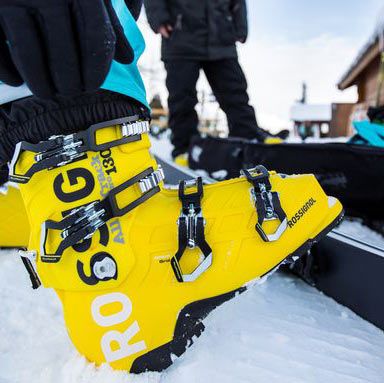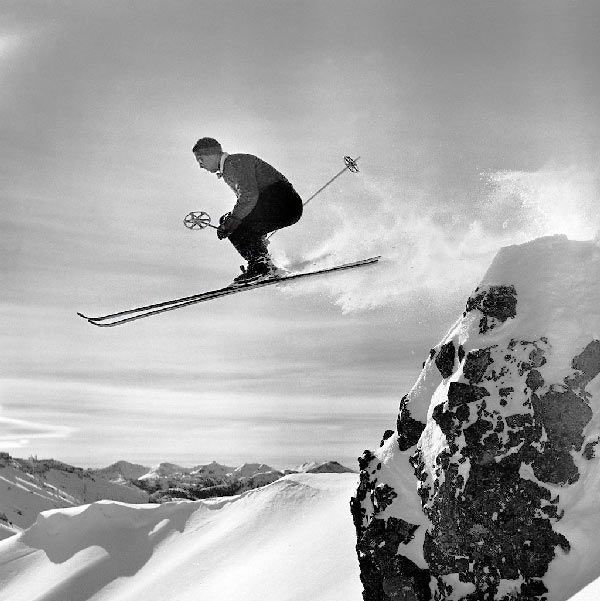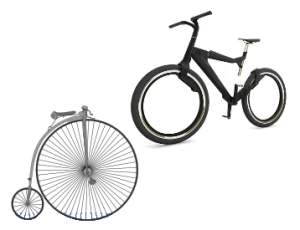 Inventing the Bicycle
It seems that a specific category of creative individuals finds the ironic saying “reinventing the bicycle” rather unpleasant. Yes, this mode of transport has not fundamentally changed in a century and a half, relying on the transfer of human muscle power to the wheels.
Inventing the Bicycle
It seems that a specific category of creative individuals finds the ironic saying “reinventing the bicycle” rather unpleasant. Yes, this mode of transport has not fundamentally changed in a century and a half, relying on the transfer of human muscle power to the wheels.
But why, for example, is this not said about cars? After all, the critical mechanism of propulsion has also remained unchanged—the work of innovators is focused on enhancing engines, improving suspension systems, making controls more user-friendly, improving cabin comfort, increasing safety standards, and more.
Many will likely be surprised to learn that a significant number of creative engineers, designers, and enthusiasts continue to search for innovative ways to improve two-wheeled machines, working in similar directions. The “bicycle innovation front” has seen numerous inventions, some of which stand out for their boldness and unexpectedness.
How to Choose a Mountain Bike How to Choose a Mountain Bike when buying? All the nuances of choosing a mountain bike.
Photos and videos about the extreme sport of skydiving can be viewed on this page .
Is the Chain Drive Becoming Obsolete?
 Chainless Bicycle
Early bicycles were powered by pedals mounted directly to the wheel axle. A major leap forward came with the invention of the chain drive to transmit torque. Over time, this system evolved, introducing the ability to adjust effort through gear shifting.
Chainless Bicycle
Early bicycles were powered by pedals mounted directly to the wheel axle. A major leap forward came with the invention of the chain drive to transmit torque. Over time, this system evolved, introducing the ability to adjust effort through gear shifting.
It would seem that nothing more is needed—a time-tested, simple, and reliable system. But designers and inventors are never satisfied.
A few years ago, a group of Hungarian engineers unveiled a fundamentally new method of transferring pedal force to the drive wheel in Padua, Italy. This system, called Stringdrive, resembles a belt drive but only superficially.
When the pedals rotate, force is transferred to shaped levers that perform oscillatory movements. These levers house sliders with two pulleys each. The sliders move up and down a toothed guide when shifting gears.
On either side of the rear drive wheel are spring-loaded hubs, each equipped with tightly wound and securely fastened cables. These cables pass through pulleys on the pedal levers and are firmly attached to the bicycle frame.
https://www.youtube.com/watch?v=AAvWD23nHBU#t=52
The operating principle is as follows: when the pedal moves forward, the cables tighten, spinning the hub on the drive wheel, which transfers rotational motion to the wheel. On the backward pedal stroke, the spring-loaded hub returns to its original position, rewinding the cables onto its pulleys. Alternating actions from the left and right pedals ensure smooth forward motion for the bicycle.
The movement of the sliders along the toothed bar of the lever allows for torque adjustment—this Stringbike model features 19 gears.
Interestingly, gears can be shifted either while riding or when stationary. Additionally, you can adjust each pedal individually—not just synchronously. This feature can be particularly useful for individuals with significant physical discrepancies in their lower limbs due to anatomical reasons.
This bike’s symmetric design improves its stability and agility. Tests have shown that this model has excellent ride smoothness, which makes riding a traditional bicycle feel somewhat inconvenient afterward.
Another significant advantage is the polymer cables. Unlike chains, they do not require lubrication or cleaning, are resistant to sand and water, and have a lifespan 2–3 times longer than chain drives.
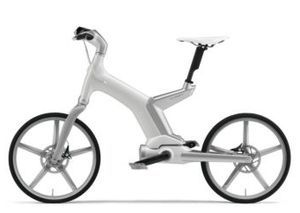 Yamaha PAS Electric Bicycle
There are also several other highly original approaches to transmitting power to the wheel. For example, German and Japanese engineers have refined shaft drive technology, which had been sporadically used before.
Innovation lies in equipping it with an automatic computerized transmission, which independently selects the optimal driving mode depending on the terrain and road conditions. Additionally, these new models from Yamaha and Mercedes are equipped with “smart” lighting and signaling systems that activate automatically in low-light conditions.
Yamaha PAS Electric Bicycle
There are also several other highly original approaches to transmitting power to the wheel. For example, German and Japanese engineers have refined shaft drive technology, which had been sporadically used before.
Innovation lies in equipping it with an automatic computerized transmission, which independently selects the optimal driving mode depending on the terrain and road conditions. Additionally, these new models from Yamaha and Mercedes are equipped with “smart” lighting and signaling systems that activate automatically in low-light conditions.
How to properly store a bike in winter Do you know how to properly store a bike in winter ? This material will help extend the lifespan of your trusty two-wheeled companion.
Learn what an autogyro is and how it flies by reading this article . Everything about this unique flying machine.
Don’t miss the short story about parachuting as a sport .
Can the Frame Be Altered?
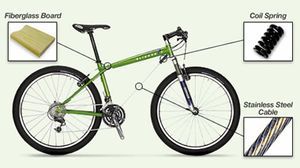 Cable instead of a tube
A group of American engineers concluded that the classic triangular frame design is excessive in some bicycles, unnecessarily adding weight to the machine.
Cable instead of a tube
A group of American engineers concluded that the classic triangular frame design is excessive in some bicycles, unnecessarily adding weight to the machine.
Indeed, the tube running from the pedals to the steering headset is under constant tension only for tensile loads, so why not replace it with a sturdy cable?
This not only significantly lightens the bicycle’s construction. The use of a spring damper at the front of the stainless steel cable and the hinged connection between the horizontal and vertical frame tubes allows for impact absorption from the front wheel, while maintaining the overall structural integrity.
This type of bicycle can be easily folded almost in half and packed into a case—another advantage for storage or transportation.
But that’s not all. Tests revealed a significant increase in the efficiency of this type of bicycle.
The spring, installed at the front of the cable, has the ability to store energy, which would otherwise be wasted during the “dead spot” of the pedal stroke, as well as energy from impacts sustained by the front wheel.
When stretched, the cable with the spring slightly lengthens the bike’s wheelbase, and when compressed, it imparts additional forward momentum.
No Fear of Falling!
 Fell off the bike
A moving bicycle maintains stability for several reasons, one of which is the gyroscopic properties of the spinning wheels—their ability to maintain the orientation of their axis in space.
Fell off the bike
A moving bicycle maintains stability for several reasons, one of which is the gyroscopic properties of the spinning wheels—their ability to maintain the orientation of their axis in space.
But there’s no explaining this to a beginner cyclist. For them, the most important thing is to overcome the initial fear of falling—everything else will follow naturally. How can we help a novice, whether they’re a child or an adult who never learned cycling in their youth?
The solution is simple—provide them with a two-wheeled bicycle with even greater stability, giving a few seconds of confidence during which they either gain balance or safely stop.
The solution is obvious—enhance the gyroscopic effect of the wheel. This is the path some engineers took in creating bicycles with enhanced safety.
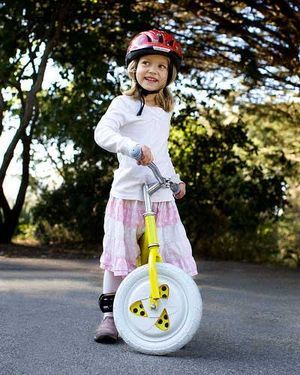 Stable wheel with a built-in gyroscope
One option is to install an additional flywheel—a gyroscope—on the same axis as the front wheel, within the spokes.
Stable wheel with a built-in gyroscope
One option is to install an additional flywheel—a gyroscope—on the same axis as the front wheel, within the spokes.
This flywheel begins spinning alongside the wheel when the bike starts moving. Due to its significant mass and inertia, it continues spinning even when the bicycle greatly reduces its speed, ensuring vertical stability.
A group of students from Dartmouth College successfully implemented this idea, calling their invention GyroBike. Interestingly, their design was patented, put into mass production, and the name of the first model became the brand of the company they later established, “GyroBike”.
Initial tests showed that novice cyclists learned to ride such bikes much faster. Moreover, these bicycles are a fantastic solution for people with certain physical limitations, particularly those with motor system impairments.
The only drawback is that the gyroscope starts spinning only when the bicycle is in motion. But what if it could be spun up beforehand—for instance, for very young riders just mastering their first meters? Of course, this is possible, and for this purpose, Gyrowheel wheels with built-in electric gyroscopes were created.
The first products were 12-inch wheels for children’s bicycles. Their configuration accommodates an electric motor, batteries, and a heavy flywheel-gyroscope. The electric drive allows the stabilization system to start before the ride begins, and significantly increasing the gyro’s rotational speed greatly enhances the bike’s stability.
https://www.youtube.com/watch?v=JkOywUxdUlI
The success of the initial models was so remarkable that the decision was made to produce 16-inch wheels, and even wheels for standard adult bicycles. Furthermore, the company’s plans include collaborating with bike manufacturers to release a branded model of a high-safety bicycle.
Bike tire pressure Find out how to choose tires and the correct bike tire pressure on our website.
A collection of the best mountaineering movies can be found on this page of the website . No need to search the entire internet.
Let’s Give Our Legs a Rest!
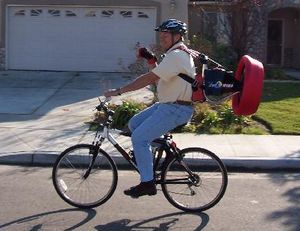 Bicycle with a propeller
The vast majority of bicycle models rely on the muscular power of the rider’s legs for movement. There are interesting designs where the mechanism is driven by hand power, but these are more akin to sports equipment than a means of transportation.
Bicycle with a propeller
The vast majority of bicycle models rely on the muscular power of the rider’s legs for movement. There are interesting designs where the mechanism is driven by hand power, but these are more akin to sports equipment than a means of transportation.
Engineers have always been working on ways to make life easier for cyclists, exploring innovative methods to impart motion to this small machine.
Some bicycles are equipped with compact internal combustion engines. There are also numerous varieties of electric drives, including the hub motor .
Certain developers even create electric bicycles that derive their energy from solar panels integrated into the wheels.
But what if we don’t fundamentally modify the bicycle’s design and instead enable acceleration for the cyclist themselves? This was the approach taken by developers of backpack-mounted engines.
To be fair, this idea has been around for quite some time. Enthusiasts have repeatedly crafted homemade devices of this kind. However, a few years ago, the American company PacificWind launched a series of backpack propeller engines specifically designed to propel bicycles.
Interestingly, this concept also appealed to rollerblade enthusiasts, skiers, and skateboarders.
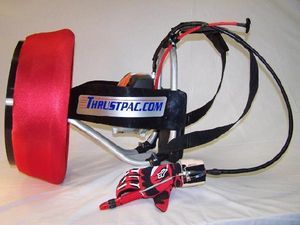 Thrustpac Backpack
The backpack is compact, produces little noise, and yet boasts 1.5 horsepower. This allows cyclists to reach speeds of over 50 km/h without pedaling. For safety, the propeller is enclosed in a guard padded with soft material.
Thrustpac Backpack
The backpack is compact, produces little noise, and yet boasts 1.5 horsepower. This allows cyclists to reach speeds of over 50 km/h without pedaling. For safety, the propeller is enclosed in a guard padded with soft material.
The engine features an intriguing control principle: a flexible cable is connected to a special glove, enabling the cyclist to select the desired operating modes with just a “flick of the fingers.”
This system is highly economical, consuming, on average, 1.5 to 2 liters of fuel per 100 kilometers, and the backpack itself weighs only 5 to 8 kilograms, depending on the model and its power.
There are even more “crazy” ideas, like equipping bicycles with portable jet boosters, although such concepts fall more into the realm of experimental creativity and are not intended for everyday use.
DIY electric bicycle Does the idea of a DIY electric bicycle have merit? Find out more on our website.
Anyone can learn to ride on the rear wheel and impress their friends by following this guide .
A story about various extreme sports associated with jumping from great heights .
Amphibious Bicycle
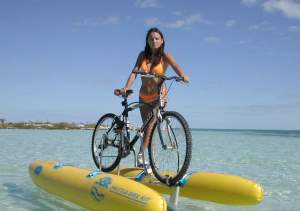 Amphibious Bicycle
It’s not a myth—bicycles are learning to overcome water obstacles and enable their owners to travel across calm water. And this is no longer just bold experimentation but already a serially produced model.
Amphibious Bicycle
It’s not a myth—bicycles are learning to overcome water obstacles and enable their owners to travel across calm water. And this is no longer just bold experimentation but already a serially produced model.
The Italian company SBK Engineering, based in the city of Vigevano, has developed a kit that transforms a road bicycle into a self-propelled catamaran in just a few minutes.
The entire kit, aside from a few components permanently attached to the bike, fits easily into a small backpack weighing just 11 kilograms. The process of converting the bicycle from land to “water mode” takes 10–15 minutes and does not require any special tools.
The propulsion system—consisting of a propeller attached to the front wheel—enables both propulsion and directional control of this aquatic transport.
The cyclist sits in the saddle as usual, pedals, and steers the direction of travel, just like on land—using the handlebars.
Pedal rotation is transmitted to the rear wheel and from there, via a flexible cable, to the propeller drive. Interestingly, this same cable is used during assembly to drive the pump for inflating the two included pontoons; the cyclist simply stays on the bike as if on a stationary trainer and inflates the pontoons by pedaling.
The resulting catamaran has a load capacity of up to 125 kilograms and can achieve speeds of up to 10 km/h—a respectable performance for water.
Tireless engineers and designers continue inventing new variations of bicycles. It’s hard not to wonder—what other innovations might they develop? But one thing is certain: they have and will always generate groundbreaking ideas.


